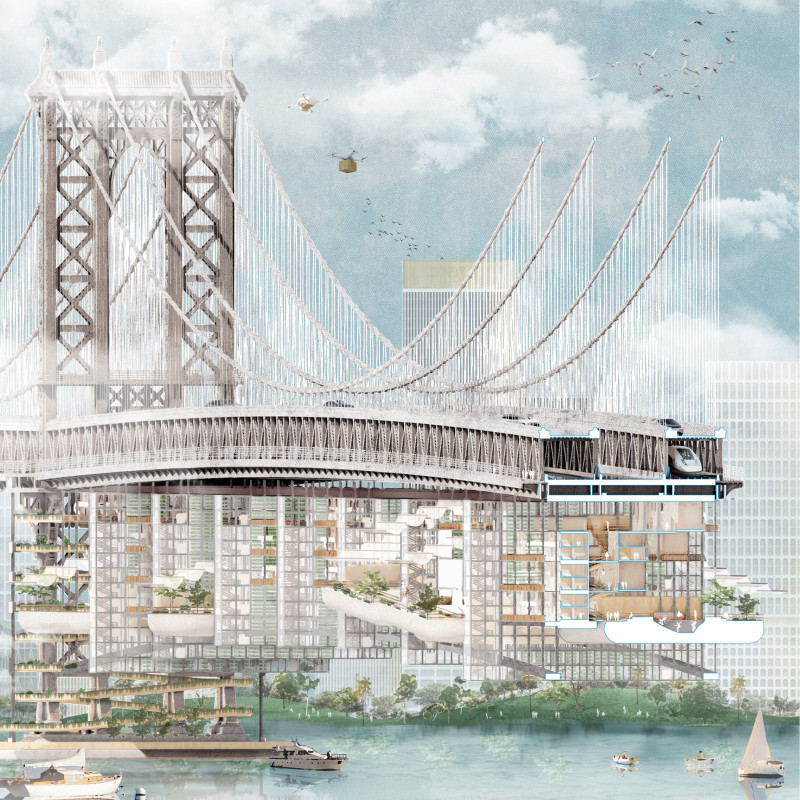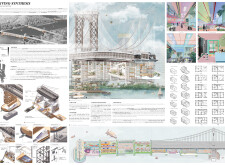5 key facts about this project
### Project Overview
**Project Name:** Living-Synthesis
**Location:** Manhattan, New York
Living-Synthesis is an architectural initiative that aims to incorporate affordable housing solutions within the existing structural framework of New York City's bridges, specifically the Manhattan Bridge. This undertaking seeks to address the city's housing crisis while promoting community engagement and sustainable living practices. By utilizing underused spaces, the project integrates residential environments into the urban fabric, enhancing both functionality and social connectivity.
### Integration with Urban Infrastructure
A key feature of Living-Synthesis is its innovative adaptation of urban infrastructure for residential use. The design repurposes the physical elements of the Manhattan Bridge, transforming them into modular living units. This approach not only utilizes available space efficiently but also blends housing needs with the city's existing structures. The modular units can be reconfigured to accommodate different family sizes, enhancing flexibility and adaptability in unit design.
### Materiality and Environmental Responsibility
The project prioritizes sustainable design through the careful selection of materials that contribute to both aesthetics and environmental goals. Wood is employed for structural elements to add warmth, while glass facilitates natural light and visual connectivity to the outdoors. Steel reinforces structural integrity and supports the modular concept. The incorporation of green roof systems and vertical gardens promotes biodiversity, improves air quality, and contributes to residents' mental well-being. Additionally, the use of recycled materials minimizes waste, reinforcing the project’s commitment to sustainability.



















































